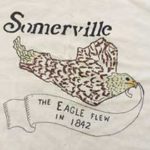
Eagle Feathers #144 – The Minutemen
By Bob (Monty) Doherty
Over the years, Union Square has been referred to as Sand Pit Square, Liberty Pole Square, Milk Row and the road to Newtown or Cambridge. When Somerville was still Charlestown’s oldest daughter, the Square was witness to the outbreak of the Revolutionary War and its heroic Minutemen of April 19, 1775.
The battle began in Lexington and Concord and finished in what is now East Somerville. Sixty-five-year-old Charles Miller died fighting the British from his Union Square post. His last words were, “I’m too old to run.” He was the last Minuteman to die that day.
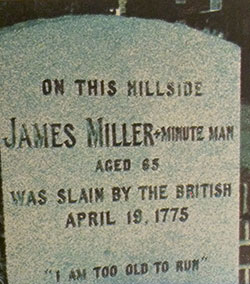
One month later, after the loss at Bunker Hill, Americans withdrew to Winter and Prospect Hills and began strengthening the area. An added stronghold, called Fort #3, took shape in the southwestern part of Union Square. From 1775 to 1776, its soldiers participated in the siege of Boston. Under the shadow of the Grand Union Flag of Prospect Hill, the position was fortified to protect the road to Cambridge and beyond.
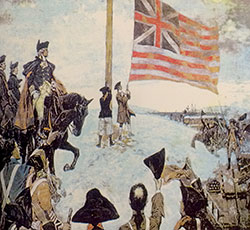
On March 3, 1842, Somerville secured its freedom from Charlestown. The first suggested name was Walford, after Thomas Walford, the first local settler. The next considered name was Warren, after General Warren, the martyr of Bunker Hill. Finally, the name Somerville was agreed upon. Some maintain it was merely a fanciful name, while many authorities assert the town was named after Captain Richard Somers. He was a national naval hero who was killed in the War with Tripoli.
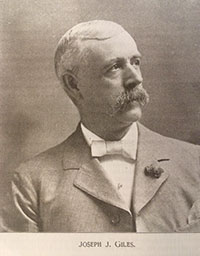
At the outbreak of the Civil War, Somerville citizens again witnessed her sons becoming soldiers. From Prospect Hill to Camp Cameron at Clarendon Hill, our troops once again trained to defend liberty. One of these soldiers was Joseph J. Giles. He was born in Union Square on March 24, 1842, and was the first-born citizen in the newly formed Town of Somerville.
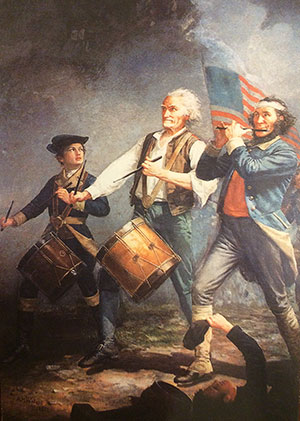
As a young man, he became one of the first volunteers to defend his country and did so through the duration of the Civil War. He enlisted in Somerville’s Light Infantry Company that was part of the Minutemen of April 19, 1861. They were the first soldiers to defend Washington, D.C. in response to President Lincoln’s call for help. Joseph fought in the Battle of Bull Run, was the First Lieutenant of the Somerville Guard, and later was the Aide–de–Camp under General John Martindale, the military governor of Washington, D.C. After the war, he represented Somerville in the state legislature serving on numerous committees, boards, and commissions.
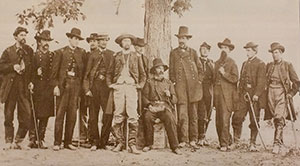
Following the Civil War, the Square’s name was changed in honor of its role as a notable recruiting point for Union volunteers. A stone at the corner of Webster Avenue and Washington Street notes the location. From this marker, a short walk west on Somerville Avenue brings you to the old Milk Row Cemetery. Here you will find the first publicly funded Civil War Memorial in the country. Enoch Robinson donated his own burial lot for the memorial location. Robinson was the builder and owner of the famous Somerville Round House on Atherton Street and Director of the Somerville Horse Railroad Company.
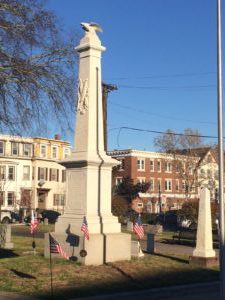
The Milk Row Cemetery Memorial and the Civil War Statue on Central Hill honor the 1,135 soldiers who set off from Somerville to save the Union. Ninety-eight of them were killed and 250 were wounded. These were the “Minutemen” of April 19, 1861.















Reader Comments